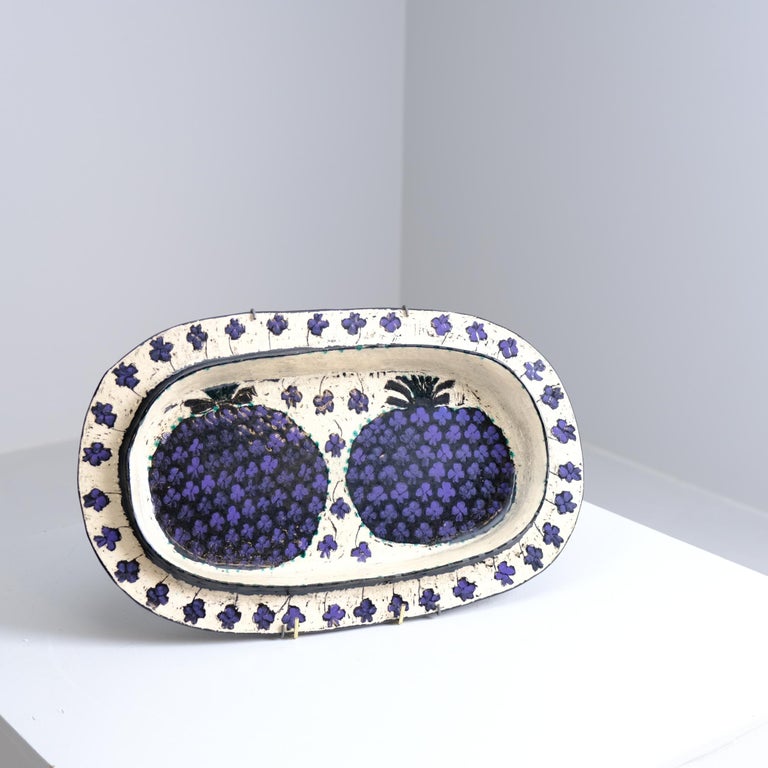Birger Kaipiainen was a master of decorative ceramics and one of Finland’s most celebrated designers. In an era when Finnish design leaned toward minimalist simplicity, Kaipiainen stood defiantly apart. A romantic at heart, he embraced lush ornamentation, surreal symbolism, and a deep emotional undercurrent in everything he created. His works — rich, layered, and often dreamlike — feature recurring motifs like birds, butterflies, fruit, flowers, and stylized women, often accented with glass beads and intricate detailing.
Kaipiainen’s long and groundbreaking career was closely tied to Arabia Oy, the iconic Finnish ceramics company, where he became a leading artistic force in mid-century design. As his career progressed, he was given increasing creative freedom, which allowed his distinctive, surreal style to fully emerge. While his early works hinted at decorative elegance, his later pieces became more fantastical and deeply expressive — objects that feel more like visual poetry than functional ceramics.
Among his most mysterious and beloved creations is the Kuovi bird series — ceramic birds with tiny embedded clocks. The inspiration traces back to a childhood friend nicknamed Kuovi, who once told young Birger that all migratory birds carry an “internal clock.” Years later, this poetic idea would reappear in his art, transformed into tactile homage.
Kaipiainen was not only a designer but a cultural figure whose circle included Finnish icons such as Tove Jansson, Kaj Franck, Armi Ratia, and Jorma Gallen-Kallela. His summers in Laatokka Karjala, steeped in Russian cultural influences, brought a Slavic richness and mysticism to his work that further set him apart from his Nordic peers.
His contributions to design were recognized internationally — most notably with the Grand Prix at the Milan Triennale in 1951, affirming his place on the global stage.
To own a piece by Birger Kaipiainen is to possess more than just an object — it’s to hold a fragment of a richly imagined world.



















